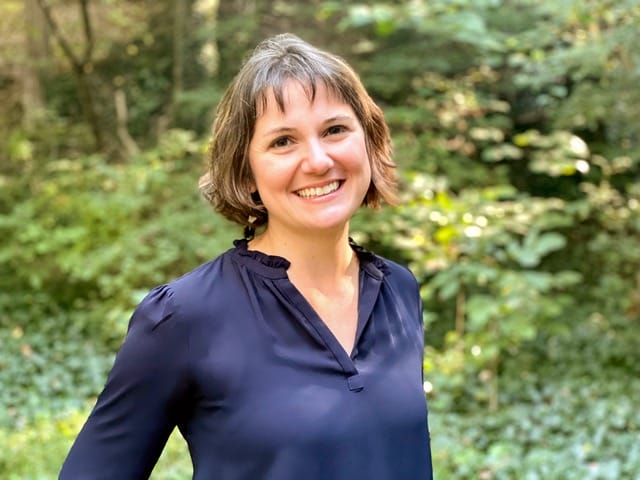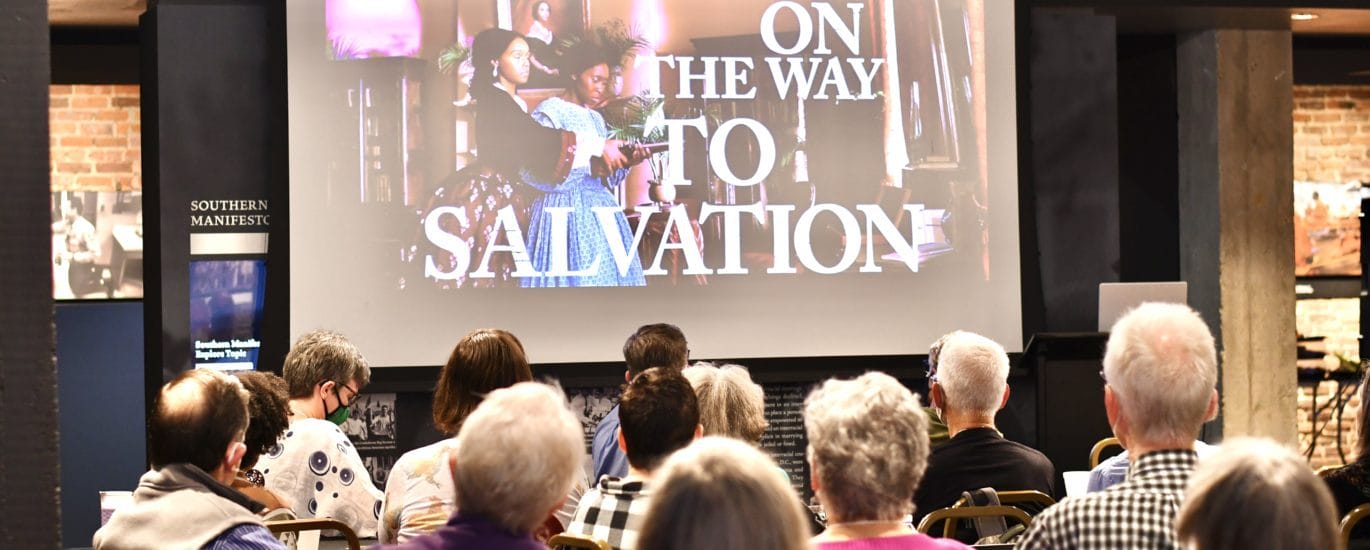By Rebecca Hewitt-Newson
This fall my faith community has been walking through a series on death and grief. Surprisingly, the challenge for us has actually not been sitting in the pain and sadness; we are well-practiced at looking at hard things in the face and not reaching for easy answers. The challenge has been how to speak of resurrection and hope with any type of confidence.
It was this difficulty I was wrestling with when I walked into the Alliance of Baptists Fall Gathering in Montgomery a few weeks ago now. I was grateful for a weekend away from pastoring but of course I was not going to be escaping grief or death. I came knowing it would be a difficult endeavor—to look at the death-dealing ways of white supremacy without turning away and to examine the roots of my tradition and my whiteness. But I was ready to be honest, and I was primed for lament.
What I did not expect to find in this gathering was the surprise of resurrection hope. I didn’t know that it was precisely in bearing witness to the enormity of suffering and senseless violence Black people in our country have endured that I would find courage and conviction stirred up within me. Their stories stirred within me the deep truth of resurrection despite the seeming finality of death and the tyranny of meaningless suffering.
I’d spent weeks talking about death before arriving in Montgomery and mostly was thinking about how to approach our individual deaths, how to make choices for a “good death,” and how to accept our mortality (I used to be a chaplain after all, so these themes are important to me). My own therapeutic approach to death, though, suddenly felt inadequate in the face of the magnitude of death I encountered on this journey. There’s no “accepting” the deaths of 3 million captured Black persons on the voyage across the Atlantic. There’s nothing “good” to be found in the lynching of 4,400 Black bodies on American soil. There’s nothing good to be found there—there’s only grieving to do and then work to commit to, and finally hope to keep going. The enormity of suffering and meaningless death made me take a hard look at my own struggle with whether resurrection was possible. And it made me realize that while it’s not possible in a way that makes logical sense, it is absolutely necessary to make sense of the God of Jesus.
As the Alliance staff wove together education, reflection, and action, I was weaving together suffering, death, and resurrection. Given what I was witnessing, I understood in a new way the necessity of holding the cross and the lynching tree together when we tell the Christian story, particularly in the United States. When I came home, I reread the words of James Cone: “The cross needs the lynching tree to remind Americans of the reality of suffering—to keep the cross from becoming a symbol of abstract, sentimental piety…Yet the lynching tree also needs the cross, without which it becomes simply an abomination. It is the cross that points in the direction of hope, the confidence that there is a dimension to life beyond the reach of the oppressor.”
I was running out of time as I ended my tour of the Legacy Museum and though I was eager to get back to our gathering on time, I couldn’t rush through the Reflection Space that concluded the exhibits. Hundreds of faces looked down at me from around the room, floor to ceiling. After walking through the hell of the museum, this felt like arriving in heaven, surrounded by a great cloud of witnesses. I found myself thinking that so many of these visionaries and freedom fighters had found in the story of Jesus something liberatory. The religion of their oppressors became a source of liberation because they recognized a crucified savior, and they felt empowered by a God who said definitively with Jesus that death is not the end. That even death cannot snuff out the love and solidarity God has for the oppressed.
Perhaps my imagination has just been too limited, maybe even by my whiteness, for the idea of resurrection. My uninterrogated commitments to “things as they are” might be inhibiting my ability to see possibilities for divine-inspired change that others can. Whereas I am an inheritor of the streams of domination that the faith has enabled, others have been wading in the streams of liberation that open up new possibilities.
This newfound hope for resurrection that I’m finding has brought with it a desire to let old ways die, particularly my (our) tired and worn-out imagination(s). The more I peel back the layers of capitalism and white supremacy and patriarchy that have shaped the world as we know it, the more I see how little will remain untouched if we truly excavate our roots. And yet, as I encountered the resurrected Jesus through the people around me, through the Alliance staff taking risky steps to challenge us, through people being honest and forthright around tables at the gathering, through the voices of incarcerated men and women sharing their experience by “telephone” in the museum, the less grief I felt about letting the old ways die, and the more sure I feel that somewhere God is ready to do a new thing.

Rebecca Hewitt-Newson is a Baptist minister serving as co-pastor at the ecumenical community of Emmaus Way in Durham, North Carolina.




Recent Comments